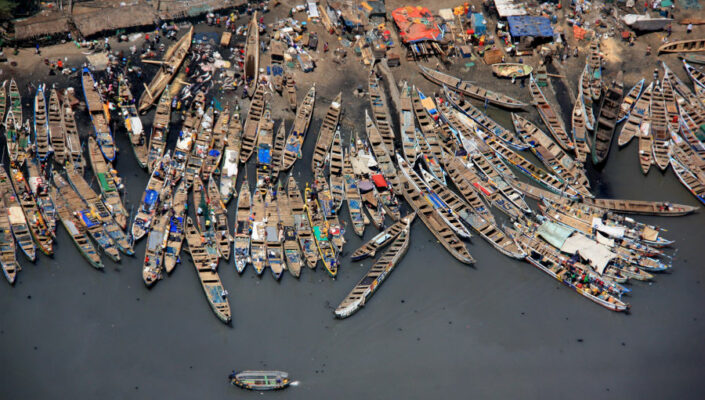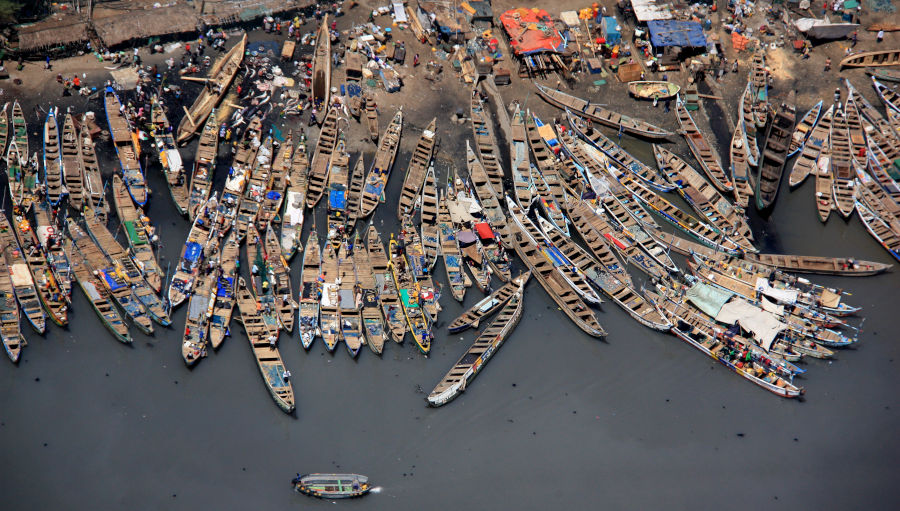Customary Laws of the Coast and Sea Research Group – The Story So Far (Part Two)

This is Part Two of the Customary Laws of the Coast and Sea Research Group – The Story So Far series.
This post focuses on one of the key points of discussion that emerged during the Q&As of our first two digital sessions (discussed in Part One here), in which the audience requested guidance on the ways that non-Indigenous and non-community researchers, practitioners, and advocates could best support communities and customary legal practices. In response, participants pointed to the importance of mutual “capacity building”.
This post outlines these responses, highlighting the issues that were raised, and some of the potential solutions that were suggested. It is hoped that this will prompt further reflection and discussion around the idea of mutual capacity building, including the many complexities, concerns, challenges, and solutions surrounding this concept.
In Part One we outlined key ideas and arguments raised, including the sometimes problematic status of customary law within national legal systems, the challenges surrounding formal recognition and practice of customary laws, and tensions between customary and non-customary laws.
Across these discussions, it was clear that capacity building was central to any initiative to promote and secure customary laws in practice, as well as to learn from the concepts and values of customary law. This is fundamental to achieving the socio-legal transformations necessary to achieving inclusive, just, and sustainable ocean use. This echoes the recent blog posts discussing the Hub’s transdisciplinary approach (see parts one and two), which stressed that the barriers and tensions across and between disciplines have to be understood in order to then break down abstract knowledge hierarchies.
Much like the “scaffolding” required for meaningful transdisciplinary research, capacity surrounding customary laws has to built on a mutual basis across scales in order to support the meaningful engagement with and elevation of customary laws and legal theories that will be central to the formation of inclusive, holistic, and human-centred approaches to ocean governance.

What do we mean by ‘capacity’ and ‘capacity-building’ in the context of legal systems change?
Saskia Vermeylen argued that there is a real need within Law Schools for more dialogue within teaching between dominant forms of taught law – based on civil and common law traditions – and customary laws. Such legal training would provide non-Indigenous lawyers with a grounding in customary laws and legal theories (to the extent that this is permissible and appropriate to communities). Providing a greater awareness of different legal systems, including the norms and values driving these systems would build capacity for more meaningful engagements with customary law, moving away from viewing these only as they have been simplified and codified within state legal systems.
According to Joshua Reid, a key issue that bedevils Indigenous initiatives in the United States is the need for more Indigenous lawyers and more Indigenous judges who can serve in roles across various legal systems. At present, these roles are filled by a limited number of legally trained Native people who are often over-burdened by multiple roles and who also have to leave their tribal nations to sit in state legislatures in order to participate and give voice to Native concerns. Greater capacity to fill these roles would support customary institutions and communities struggling against national and non-customary interest groups (who often have more generous resources at their disposal), while also providing scope to strengthen customary and state governance.
Echoing the above points, Bola Erinosho noted that legacies of colonialism meant that legal training in Ghana was until recently focused predominantly on English common law, reinforcing perceptions that this was the most valued and usable method of law enforcement and implementation amongst practitioners. A number of projects are now acknowledging the value and importance in utilising customary law as a critical tool to engage communities and gain their participation in, support for, and help designing environmental regulatory systems.
Joytishna Jit described Locally Managed Marine Areas (LMMA) in Fiji which are implemented, monitored, and enforced by local communities. This includes the use of customary legal mechanisms (tabus) to prohibit fishing in certain areas at certain times. It is largely accepted that the development of managed marine areas is more effective if it includes community participation, but as Jit persuasively argued, to be successful it must also focus on developing policy that is enmeshed in and upholds local customs and values.
In many senses, capacity-building efforts should not be limited to the training for formal legal practitioners in this work of upholding customary legal systems and laws, as Jackie Sunde discussed in her presentation on legal advocacy in and between small-scale fisheries in South Africa. Work to inform fishers about the way their familiar customary laws may intersect with national and international law and policy in legally empowering ways (for example, in its intersection with the UN FAO’s Small-Scale Fisheries Guidelines) has been successfully spreading across multiple communities and between many individuals, as groups have shared information with each other. It is crucial then that ‘capacity-building’ efforts not only focus on dialogue and sharing across customary and non-customary practitioners, but also between local communities and Indigenous Peoples across local, regional, and international scales.
For discussant Jacqueline Espenilla, each of the presentations demonstrated the resilience of customary laws against external attempts to dispossess, limit, or disregard these practices – further demonstrating the potential of these systems for community benefit into the future. As emphasized by Joshua Reid, Indigenous groups and communities have not passively accepted dispossession and the loss of rights. Instead, this is part of a long and ongoing history of Indigenous struggle, where individuals and communities have fought and continue to fight for equality in legal spheres.
How can mutual capacity building be achieved in practice?
All of the presenters stressed the importance of listening to communities in their own contexts and on their own terms, becoming immersed in these contexts as far as possible. At the same time, it was stressed that a complete understanding of customary laws by a non-Indigenous person or a person not of that community is extremely difficult and even inappropriate.
As discussed in Part One, it has been the attempts to translate and codify customary law to fit a particular construction or understanding of the law that has obstructed and dispossessed local communities of their customs and voices in the past. Instead, rather than a need for non-community members to fully comprehend the intricacies of customary laws, the focus should be on identifying the opportunities to learn and to share across community and non-community perspectives, observing the tension between different legal systems and working within that tension to elevate and appreciate the voices of communities.
This can only be achieved where there is capacity, trust, and parity on both sides.
This aligns to movements within research and development practice to ensure that activities (and research in particular) are a mutually beneficial process. Researchers may benefit from the interactions with communities in terms of building their own knowledge and capacity, and so fair and equitable exchange involves work that is clearly of benefit to communities of study too. This is not just about outcome, but about method: on critical issues – say, the way in which the order of law effects the social and ecological lives of fisheries – prospective communities of study may be best placed to identify what is of benefit to them and what that benefit might look like, thus shaping research questions and objectives from the beginning of research.
The issue of mutual capacity building in development research is complex – it may involve working against the grain of well-established paradigms and norms of practice that govern, for instance, disciplinary practices and the structure of North-South development efforts; it also involves wading into fraught landscapes of power in and across communities, between individuals, and institutions. At the same time, the administrative structure of funding and institutional frameworks may unintentionally impede equitable and dynamic relationships between researchers and communities.
Linking again to the recent blogs surrounding transdisciplinary research, it is also crucial that mutual capacity building occurs between researchers, constructing the “scaffolding” that is essential to supporting meaningful and equitable engagement with communities on the ground. This could be to support researchers who have not before engaged in close participatory research with communities or researchers who have not operated within DAC contexts. This requires close collaboration with and supportive guidance from researchers who have this experience. This is not to suggest that researchers from different backgrounds, experiences, and disciplinary focuses can be or should be expected to fully comprehend the multilateral contexts that community experiences and challenges are embedded within. Instead, a transdisciplinary approach offers the space to draw from different learnings, methods, and guidance surrounding equitable partnerships with communities – including an exploration of the tensions between different approaches – to begin to build the capacity for a more holistic understanding through the collective lens of researchers and community voices.
As writers of this blog, in conversation with others and in personal reflection, we noticed that this issue of capacity building for whom and in what sense – in this context of hoping to create research and ‘impact’ of benefit to communities – sloshes around (sometimes alarmingly) in many directions. For instance, how do we plot this on a disciplinary landscape which is also spun out geographically? After all, academic practice is a culture in and of itself that has varied enormously across time and place. What is the need for ‘capacity building’ in terms of structural affordances and individual understandings of how disciplinary methods and modes of analysis and practice will have to shift to produce the ‘transformational’ change that global marine governance needs? How do we account for this in the planning and articulation of our work?
We will continue to discuss these issues within the Customary Laws of the Coast and Sea Research Group and are keen to hear your thoughts, comments, feedback, or case studies of successful practice surrounding mutual capacity building.
These conversations will continue throughout 2021 so keep an eye out for upcoming news on this. Please sign up to the One Ocean Hub newsletter (in the footer) to be kept informed of our future sessions.
We would also welcome comments, questions, and suggestions on the themes of Part One and Two of this series so far.